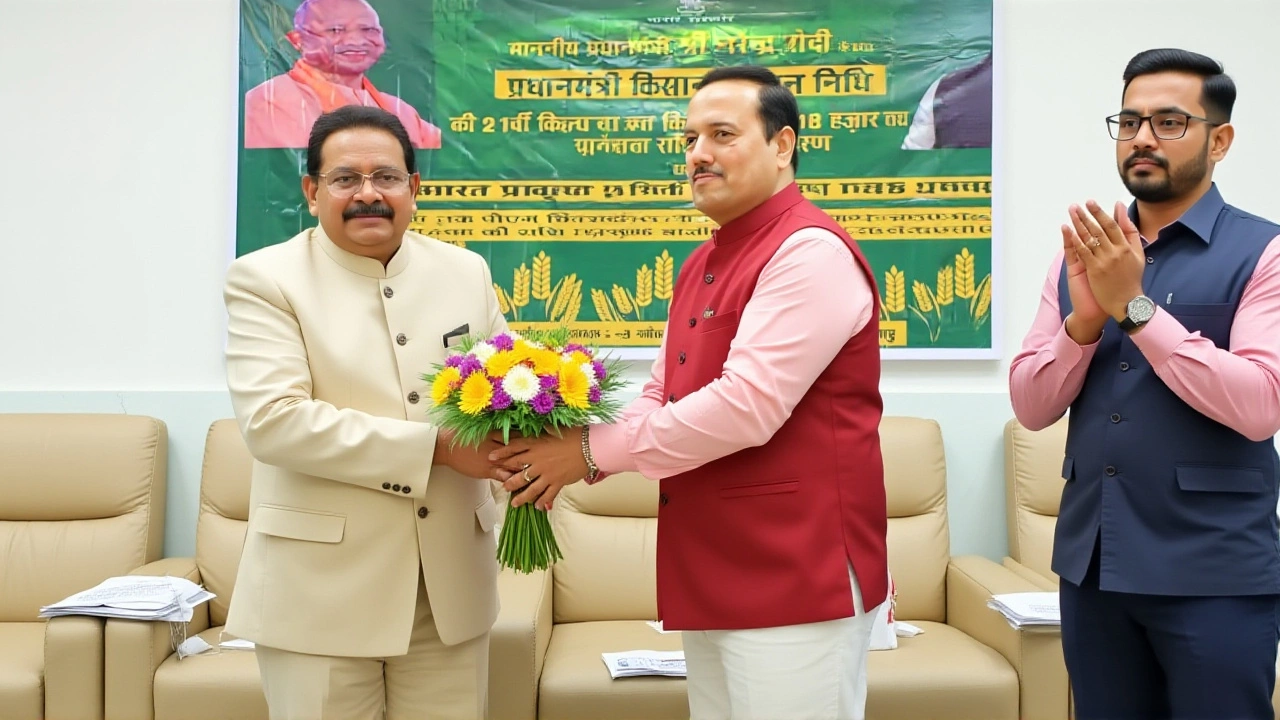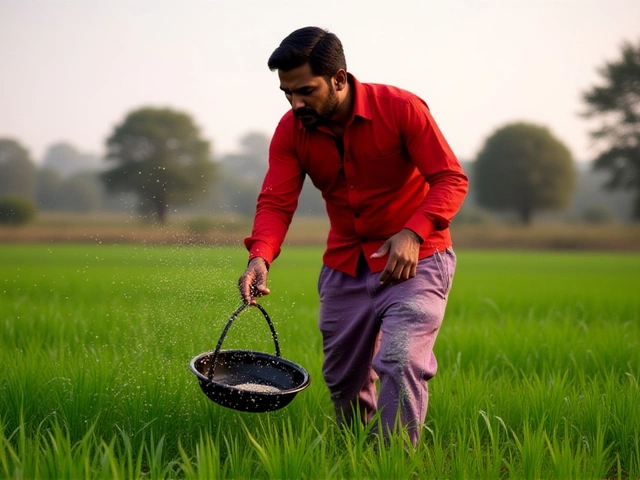PM Modi releases Rs 18,000 crore PM-KISAN 21st instalment to 9 crore farmers

On November 19, 2025, Narendra Modi stood under the warm afternoon sun in Coimbatore, Tamil Nadu, moments after inaugurating the South India Natural Farming Summit 2025Coimbatore, and announced the release of the 21st instalment of the Pradhan Mantri Kisan Samman Nidhi (PM-KISAN) scheme. At 3:45 PM IST, ₹18,000 crore flowed directly into the bank accounts of nearly 9 crore farmers — a quiet revolution, one ₹2,000 transfer at a time. No fanfare, no parade. Just money. Real money. Into the hands of people who grow the nation’s food.
How PM-KISAN Became India’s Largest Cash Transfer Scheme
Launched on February 24, 2019, as part of the Interim Budget presented by then-Finance Minister Piyush Goyal, PM-KISAN was never meant to be a political stunt. It was a response to a crisis: farmers drowning in debt, crop prices collapsing, and rural incomes stagnating. The idea was simple — give landholding families ₹6,000 a year, paid in three equal instalments. No intermediaries. No delays. Direct to bank accounts. The Ministry of Agriculture and Farmers Welfare built the system from scratch, integrating Aadhaar, bank data, and land records. By 2025, it had become the world’s largest direct benefit transfer program for farmers, with over 3.2 billion transactions processed since inception.The 20th instalment, released on August 2, 2025, had already hit ₹20,500 crore for 9.7 crore beneficiaries. But the 21st? Even more precise. More targeted. More digital.
The Digital Push: eKYC and Facial Authentication
Here’s the twist: the money doesn’t just land in accounts anymore. It’s conditional. Since October 2025, farmers must complete eKYC — electronic Know Your Customer verification — to receive payments. And the government didn’t just make it mandatory. They made it easy.The newly launched PM-Kisan Mobile App, rolled out on October 5, 2025, lets farmers verify their identity using facial recognition tied to their Aadhaar card. No need to travel to a Common Service Centre. No waiting in queues. Just open the app, look at the camera, and done. It’s like unlocking your phone — but this unlocks ₹2,000.
“We’re not just sending money,” said Shivraj Singh Chouhan, Agriculture Minister, during a press briefing on November 10. “We’re fixing the system. If your land record is missing, or your bank account doesn’t match Aadhaar, you don’t get paid. That’s not exclusion. That’s accuracy.”
And it’s working. As of November 18, 2025, 98.7% of the 21st instalment funds were credited within 24 hours. The remaining 1.3%? Mostly due to mismatches — a name spelled differently in land records, a bank account closed, or an Aadhaar number not updated. The government’s response? A saturation drive across all 736 districts. Teams are walking into villages, using tablets to update records on the spot.

Women Farmers Are the Silent Backbone
One of the most underreported stories of PM-KISAN? The rise of women beneficiaries. As of November 2025, over 25% of recipients are women farmers — many of them widows, single mothers, or heads of households managing small plots. In states like Odisha, Chhattisgarh, and Jharkhand, the share exceeds 30%.This isn’t accidental. The scheme requires land records to be in the farmer’s name — and the government has been pushing state agencies to update records to include women. For many, this is the first time they’ve received money directly — not through a husband or son. It’s changing power dynamics in rural homes.
What’s Next? The February 2026 Deadline
The quarterly rhythm is now set in stone: April-July, August-November, December-March. That means the 22nd instalment — expected in February 2026 — will be the last of the financial year. The Ministry has already begun preparing the database, cross-checking with the National Informatics Centre and the Unique Identification Authority of India (UIDAI).But the real question isn’t when the next payment comes. It’s whether the scheme will expand. Currently, it covers only landholding families. What about landless labourers? Tenant farmers? The debate is growing louder. Critics say PM-KISAN is a band-aid. Supporters argue it’s the only thing keeping millions from slipping into destitution.
The numbers speak for themselves. Since 2019, over ₹3.70 lakh crore has been transferred to more than 11 crore farmer families. That’s more than the annual budget of several small countries. For a farmer in Madhya Pradesh earning ₹150 a day, ₹2,000 is three weeks’ income. It buys seeds. It pays school fees. It keeps the lights on.

How to Check Your PM-KISAN Payment Status
If you’re a beneficiary, here’s how to check your status — no middleman needed:- Visit pmkisan.gov.in
- Click on “Beneficiary Status”
- Enter your Aadhaar number or application ID
- Type the captcha exactly as shown
- Click “Get Data”
You’ll see your full name, father’s/husband’s name, village, district, payment history, and eKYC status. If it says “Pending,” don’t panic. Visit your nearest Common Service Centre. They’ll help you complete biometric verification for free.
Frequently Asked Questions
Who qualifies for PM-KISAN payments?
Only landholding farmer families with cultivable land, whose names appear in official land records, and who have completed eKYC via Aadhaar are eligible. The scheme excludes large landowners, salaried government employees, and those with income tax filings above the threshold. Women farmers are included if their names are on land records — and over 25% of beneficiaries are now women.
Why was my ₹2,000 payment rejected?
Common reasons include mismatched Aadhaar and bank details, incomplete land records, or failure to complete eKYC. Over 1.3% of the 21st instalment faced this issue. The government’s village-level saturation drives are actively resolving these cases. Farmers can use the PM-Kisan Mobile App for facial authentication or visit a Common Service Centre for biometric help — both free.
How is PM-KISAN different from previous farm subsidy schemes?
Unlike input subsidies (fertilizer, electricity, water), PM-KISAN gives cash directly to farmers, letting them decide how to spend it — whether on seeds, medicine, or their children’s education. It’s also fully digital: no ration cards, no quotas. The Direct Benefit Transfer system cuts corruption and ensures 98.7% of funds reach beneficiaries within 24 hours.
Is PM-KISAN going to be expanded to landless farmers?
There’s no official announcement yet, but pressure is growing. Landless agricultural labourers — who make up nearly 40% of India’s farming workforce — currently don’t qualify. Experts argue expanding the scheme could reduce rural poverty faster. The 2026 Budget may include pilot programs in states like Bihar and Uttar Pradesh, where landlessness is highest.
What’s the total impact of PM-KISAN since 2019?
Since its launch, PM-KISAN has transferred over ₹3.70 lakh crore to more than 11 crore farmer families across 21 instalments. It has processed over 3.2 billion transactions, making it the largest cash transfer program for farmers globally. The scheme has stabilized rural incomes during droughts and price crashes, and reduced farmer distress in states like Maharashtra and Telangana.
When is the next PM-KISAN instalment due?
The 22nd instalment is expected in February 2026, following the scheme’s quarterly pattern: April-July, August-November, and December-March. The Ministry of Agriculture has already begun preparing beneficiary data, with special focus on resolving pending eKYC cases before the release.

